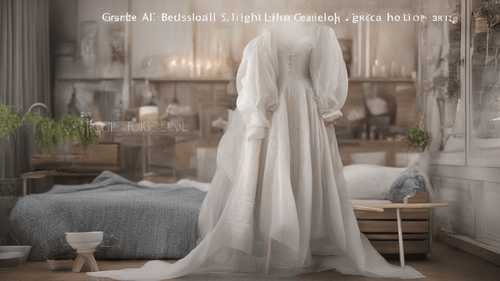
Introduction
In the rapidly evolving landscape of artificial intelligence, a groundbreaking application has emerged – the ability of AI to generate images from textual descriptions. This innovation holds immense potential for transforming creative processes, streamlining visual content creation, and revolutionizing various industries. This article delves into the intricacies of AI-generated images, their significance, applications, and the profound impact they have on our visual-driven world.
AI Generate Image from Description: Understanding the Concept
Unveiling the Power of AI Generate Image from Description
AI generate image from description refers to the remarkable capability of artificial intelligence systems to create visual content based on textual input. This process involves leveraging advanced algorithms, deep learning techniques, and neural networks to interpret descriptive language and translate it into stunning, lifelike images. By bridging the gap between language and imagery, AI generate image from description has opened up new horizons for designers, artists, marketers, and various other professionals.
The Inner Workings of AI-Driven Image Generation
At the core of AI generate image from description lies the intricate interplay between natural language processing (NLP) and computer vision. Advanced models, such as generative adversarial networks (GANs), transform textual descriptions into pixel-level representations. GANs consist of two neural networks – a generator that produces images and a discriminator that evaluates them. Through iterative feedback, the generator refines its output, resulting in images that progressively align with the given description.
Applications of AI Generate Image from Description
Revolutionizing Design and Creativity
Imagine a world where designers and artists can effortlessly translate their concepts into visual masterpieces. AI generate image from description empowers creatives to bring their visions to life with unprecedented ease and speed. Design iterations become more efficient, and the creative process becomes more intuitive as AI-generated images serve as a foundation for further refinement.
Elevating E-Commerce and Marketing
In the realm of e-commerce, visual content plays a pivotal role in driving engagement and conversions. With AI-generated images, product descriptions can evolve into immersive visual experiences. Marketers can tailor images to specific customer preferences, creating personalized and captivating shopping journeys that enhance brand loyalty and sales.
Streamlining Architectural Visualization
Architects and urban planners can leverage AI-generated images to visualize their blueprints and concepts. These images offer a tangible representation of future structures, aiding in effective communication with clients, stakeholders, and project teams. This application expedites decision-making processes and fosters collaboration in the architectural domain.
AI Generate Image from Description in Various Industries
Fashion and Apparel Industry: Redefining Visual Catalogs
The fashion industry thrives on visually appealing catalogs that showcase products in their best light. AI generate image from description allows fashion brands to automate the creation of catalog images, enabling rapid updates and adaptations to current trends. This technology accelerates time-to-market and ensures consistent brand representation.
Gaming and Virtual Worlds: Enabling Dynamic Environments
In the gaming realm, AI-generated images contribute to the creation of dynamic and immersive virtual environments. Game developers can use textual descriptions to populate scenes, characters, and objects, enhancing the player's experience. This capability reduces the manual effort required for asset creation and contributes to richer gameplay.
Film and Entertainment: Enhancing Visual Effects
AI-generated images have also found their way into the film and entertainment industry. Visual effects studios can use AI to generate complex scenes and environments, minimizing the need for labor-intensive manual rendering. This efficiency allows filmmakers to focus on storytelling and creative direction.
AI Generate Image from Description: Addressing Challenges
Fidelity and Realism
While AI-generated images have made remarkable strides, achieving absolute fidelity and realism remains a challenge. Generating images that match the human perception of reality requires refining algorithms and training models on vast datasets that encompass diverse scenarios and contexts.
Ethical Considerations
As AI-generated images become more indistinguishable from human-created visuals, ethical concerns arise. These include potential misuse for deceptive purposes, infringement of intellectual property rights, and the blurring of lines between authentic and AI-generated content.
Cultural and Social Implications
The integration of AI generate image from description also raises questions about cultural representation and bias. Models trained on biased datasets may inadvertently perpetuate stereotypes or lack diversity, underscoring the need for responsible AI development and training.
FAQs About AI Generate Image from Description
How Accurate Are AI-Generated Images?
AI-generated images have achieved remarkable accuracy, often producing visuals that closely align with the given descriptions. However, achieving complete realism and perfection remains a continuous endeavor.
Can AI-Generated Images Replace Human Creativity?
AI-generated images complement human creativity by expediting visual content creation and providing a starting point for further artistic refinement. They are tools that enhance creative processes rather than replace them.
Are There Limitations to AI Generate Image from Description?
Yes, there are limitations. AI-generated images may struggle with highly abstract or conceptual descriptions that lack concrete visual references. Additionally, generating highly detailed or intricate images might pose challenges.
How Can AI-Generated Images Be Used Responsibly?
Responsible usage involves verifying the authenticity of images and disclosing their AI-generated nature when necessary. Additionally, fostering diversity in training datasets helps mitigate bias and cultural insensitivity.
What Is the Future of AI Generate Image from Description?
The future holds exciting possibilities, including improved realism, wider applications, and enhanced ethical frameworks. As AI technology advances, the potential for generating high-quality, contextually relevant images grows exponentially.
Can AI-Generated Images Enhance Educational Materials?
Absolutely. AI-generated images can enrich educational materials by providing visual representations of complex concepts, historical events, and scientific phenomena, making learning more engaging and accessible.
Conclusion
AI generate image from description marks a significant milestone in the evolution of artificial intelligence. By harnessing the synergy between language and visual content, this technology has the power to reshape industries, amplify creativity, and streamline communication. As AI continues to push boundaries, embracing responsible development and ethical considerations will be crucial to realizing the full potential of AI-generated images in our ever-evolving digital landscape.